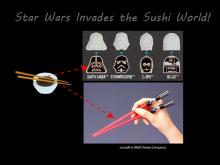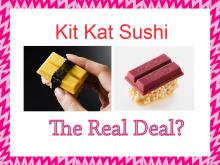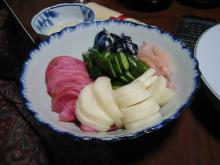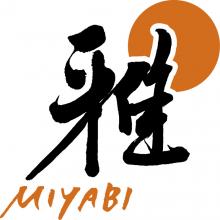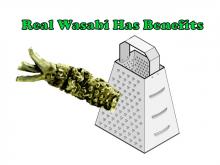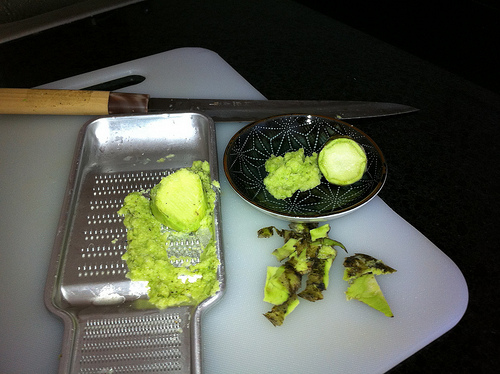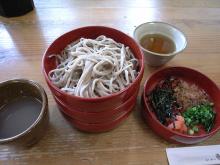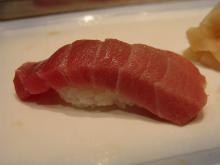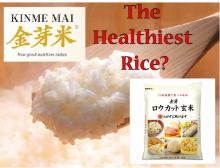Who doesn’t love pickles? But have you ever tried making them? How about the Japanese way of doing pickling? Well there are many different techniques and in this article we will explain the basic idea behind some of the concepts.
If you want to learn more on the different types of Japanese pickles please make sure to read our article on Tsukemono.
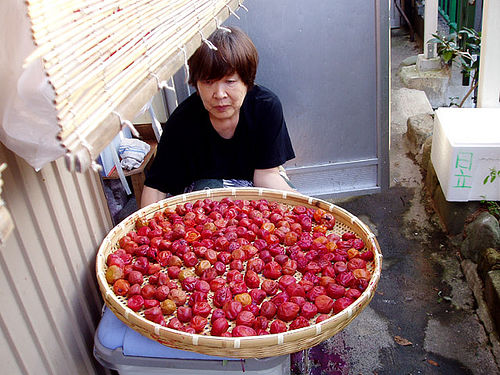
 by oya: pickled Japanese apricot
by oya: pickled Japanese apricot
Marinating
This is the old-school way of pickling and it involves using other flavours such as vinegar brine. This technique can be quick depending on the vegetable you’re using. Other times this pickling method will require time. This is also the common way of pickling in many other cultures across the world.
Pickling beds
Having such a pickling bed that you can reuse repeatedly is one of the ultimate Japanese way. The way it works is that the vegetables that you will be using for pickling is simply buried in a mixture.
One example of a mixture is nuka using the “Nukazuke” technique. This nuka is roasted rice bran that is mixed with other ingredients such as Kombu (a type of seaweed), ginger, salt and water. This mixture is mixed in a container made out of wood or ceramic. Other interesting ingredients that you will be surprised that is also placed in this container are persimmon peels, wine, and apples (peels). It will take a few days for the ingredients to be cultured into a fermented state before any pickling is done. This can take a couple days.
Once the mixture is ready for use, it will look like a grainy or sandy soil. You then insert your vegetable of choice to be pickled into the mixture. The vegetable will then be cure in this container for an X amount time which could be hours or even years.
The taste of Nukazuke is pungent in a tasty way, more less a sour and tangy flavour. The best part of all is that this technique is known for giving the pickles a nice beautiful crunch. Don’t be surprise because not only can use your favourite vegetables, but you can also use fish such as mackerel or sardines which is a popular way of using Nakazuke in northern Japan.
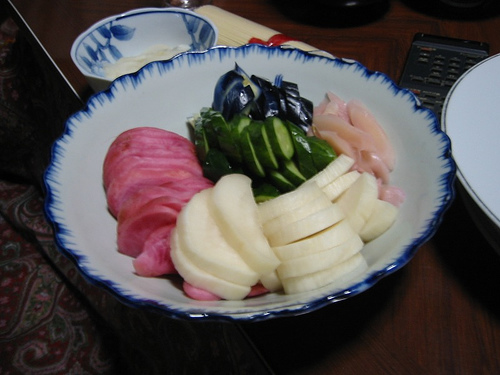
 by nyaa_birdies_perch- Common Ingredients for Pickling
by nyaa_birdies_perch- Common Ingredients for Pickling
Using pressure
This technique involves applying weighted pressure to the ingredients to be pickled. This is done by using a lid that moves down inside a vessel or container. In order for the lid to slide down, the shape of the lid has to be slightly smaller than the circumference of the vessel. Many different items are used as weights to be placed on top the lid. For example, you can use rocks or any other household item that has weight to it.
The weighted objects is then placed carefully on top of the lid which helps push down and gently compressing the ingredients. Over time and during the compression, the ingredients will be releasing its liquid while the lid slowly moves down the vessel.
This technique also provides a great crunch to the pickling.
Source https://www.splendidtable.org/story/with-a-nuka-pickling-bed-you-can-have-pickles-for-life


